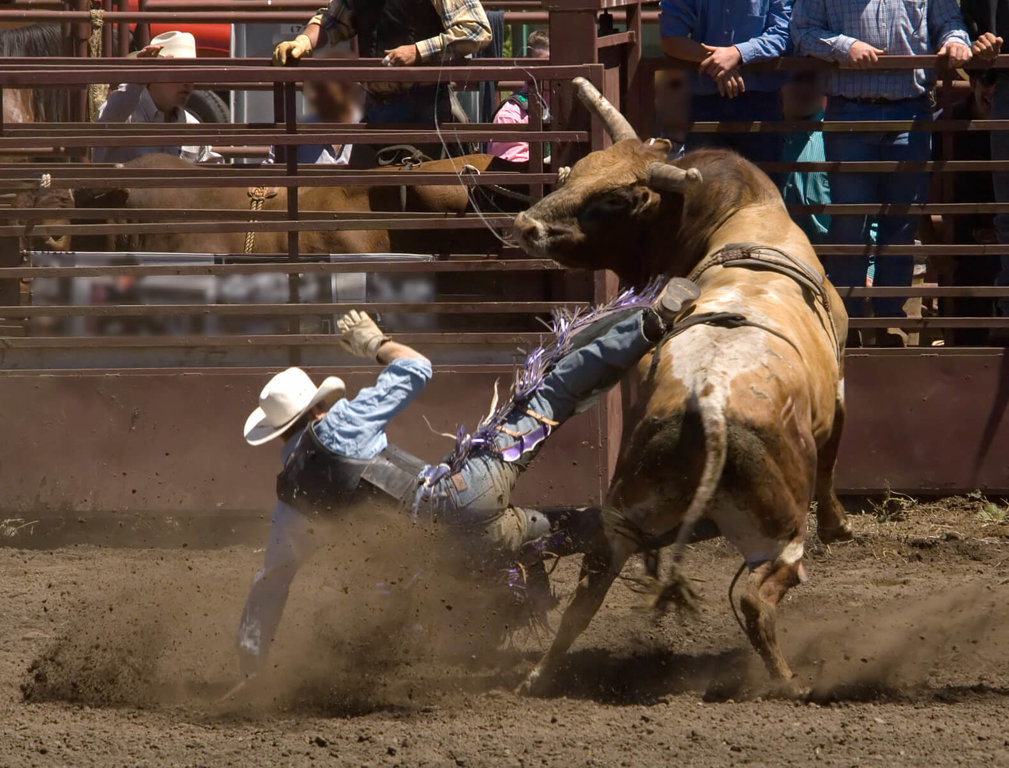In the heart of the American West, the sound of the rodeo reverberates, enticing spectators with its allure of tradition and thrill. Yet, beneath the glitz and glamour of this spectacle lies a darker question: Are rodeos merely a form of entertainment or do they represent institutionalized animal cruelty? It is a debate that stirs passions on both sides, challenging us to consider the ethics of our entertainment choices.
To begin, it’s essential to understand what a rodeo entails. Events such as bull riding, tie-down roping, and steer wrestling are integral components. These activities, while thrilling for audiences, often involve scenarios where animals are subjected to stress, fear, and even injury. The narrative of the cowboy hero triumphing over nature ascends into folklore, but at what cost to the animals involved? These creatures, whether they are bulls, horses, or calves, are not participants by choice; they are compelled into these scenarios, their agency stripped away.
The method of bringing animals into the rodeo arena is contentious. Practices such as flank straps—used to encourage bulls to buck—inflict discomfort. Although proponents argue that these methods are humane and necessary to provoke action, the counterargument suggests that they introduce an element of pain and distress. Animals, like humans, experience anxiety. The bright lights, raucous crowds, and chaotic environment can evoke fear, leading to a stressful experience that can have both immediate and long-term effects.
Moreover, the physical risks to the animals cannot be overstated. Injuries during events are not just possible; they are prevalent. Bulls can suffer from broken bones and internal injuries, while horses can encounter foot injuries or even fatal accidents. What is often overlooked is the aftermath of such injuries. Many rodeo animals face a grim fate once their careers end—those deemed no longer profitable can find themselves in dire situations, abandoned, or worse, subjected to inhumane treatment. This raises the question: are we as a society complicit in this cycle of exploitation for our fleeting entertainment?
On the other hand, supporters of rodeos argue that these events celebrate tradition and are a fundamental aspect of agricultural heritage. The rodeo is often viewed as a rite of passage; a celebration of skills honed through generations. They highlight that many participants care deeply for the welfare of their animals and maintain that skilled handlers are capable of ensuring a humane treatment of these creatures. True, there are ongoing efforts toward enforcing better treatment standards within the industry. However, one cannot ignore that the existence of regulations does not negate the ethical dilemma surrounding the fundamental nature of rodeos—the use of animals for entertainment purposes.
Another critical aspect revolves around public perception and cultural significance. Riding the waves of nostalgia, rodeos invoke a reverence for cowboy culture, symbolizing grit, determination, and an adventurous spirit. Yet, as societal values evolve, we must question whether glorifying animal exploitation aligns with contemporary moral standards. The conversation shifts from “it’s always been done this way” to “should it continue?” In an era of heightened awareness regarding animal rights, can we still condone events where animals are commodified for amusement?
What is often missed in this debate is the obstinate dichotomy of the animal-human relationship. Traditionally, many cultures have viewed animals through a utilitarian lens, valuing them primarily for their labor or entertainment value. This perspective breeds a culture that can devalue the intrinsic worth of animal life, treating them as mere tools. Conversely, many advocates today argue for a compassionate perspective where animals are seen as sentient beings deserving of respect and protection. Isn’t it time we re-evaluate the narratives that underpin our cultural practices?
In many communities, there are alternatives to traditional rodeos that celebrate skill and athleticism while avoiding animal involvement. Events like rodeo-themed games based on human competition allow for the spirit of rodeo culture without direct animal harm. Such alternatives challenge the entrenched norms of entertainment and invite us to engage in discussions on what constitutes moral entertainment.
The call for reform is not without its barriers. Resistance from traditionalists who perceive any challenge to rodeo culture as an affront to their heritage can create tension. Yet, as advocacy for animal rights continues to gain momentum, the call for change becomes ever more insistent. The evolving social conscience urges us to reflect on how we juxtapose tradition with morality. It raises the unplayful challenge of reconciling our love for heritage with our responsibility for compassion.
In conclusion, as we enjoy the spectacle of rodeos, we must also confront the unsettling truths that accompany them. Are we willing to uphold the legacy of an institution that potentially thrives on cruelty, or can we redefine the narrative—a narrative that celebrates skill and tradition without the cost of animal suffering? The conversation must persist; shaping our cultural practices according to the tenets of empathy may lead us toward a future where entertainment does not equal cruelty. This contemplation requires a collective acknowledgment that how we choose to celebrate our heritage reflects our values as a society.






